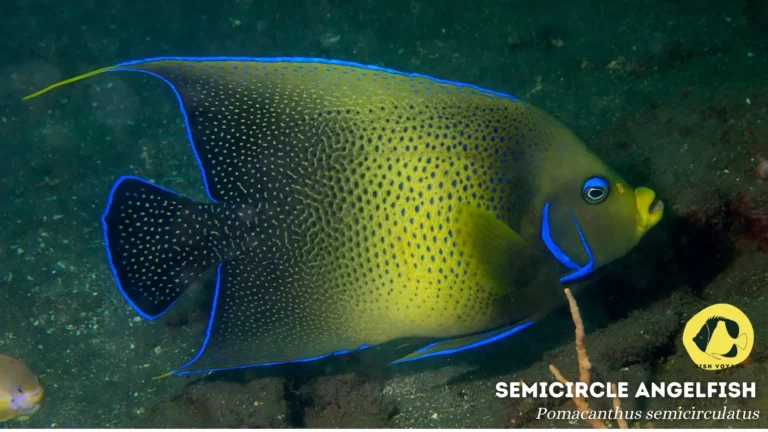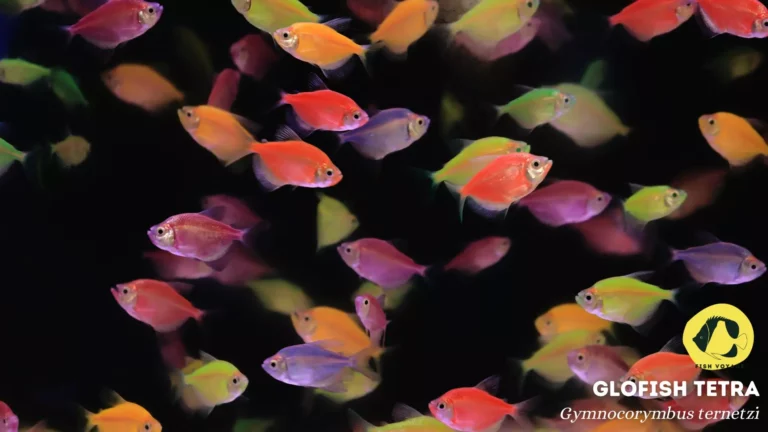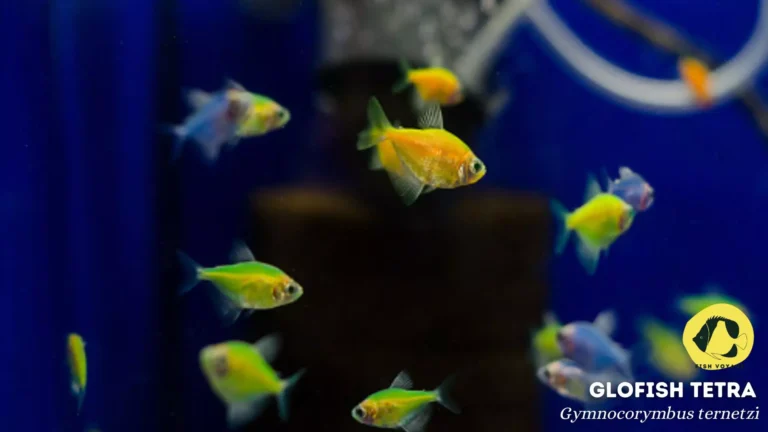How To Take Care Of Glofish Eggs?
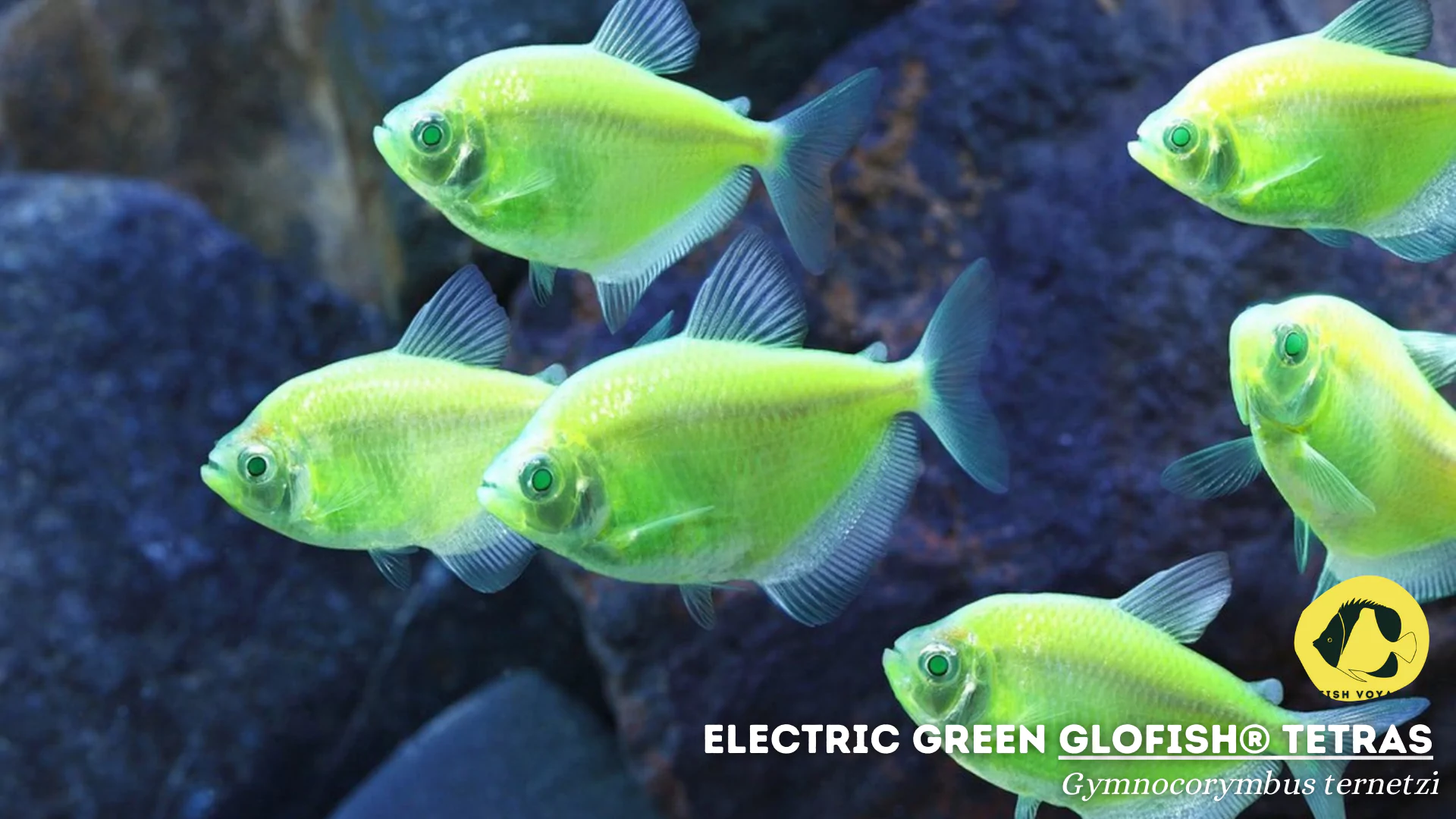
Welcome to the fascinating world of Glofish reproduction, where vibrant colors and aquatic beauty come to life through the delicate process of egg incubation. Glofish eggs, small and translucent, hold the promise of new life within the aquarium ecosystem. These unique eggs, distinguishable by their ethereal appearance, signal a critical stage in the life cycle of these captivating aquatic creatures.
Proper care during the incubation period is paramount, as it directly influences the health and vitality of the developing Glofish. As aquarists, understanding the nuances of nurturing Glofish eggs is not merely a responsibility but a gateway to witnessing the magical transformation from egg to fry. Join us on this educational journey as we delve into the intricacies of Glofish egg care, uncovering the secrets to fostering a thriving aquatic community within your own aquarium.
Understanding Glofish Reproduction
Breeding Process in Glofish
Glofish, known for their vibrant fluorescence, follow a meticulous breeding process that captivates aquarium enthusiasts. The reproductive journey begins with courtship rituals, where males display dazzling colors to attract potential mates. Upon successful courtship, females deposit eggs in carefully chosen locations, often near plants or decorations within the aquarium.
Key Factors Influencing Successful Reproduction
- Water Quality: Optimal water conditions, including temperature and pH levels, play a pivotal role in triggering breeding behaviors. Maintaining a pristine environment is crucial for encouraging Glofish to spawn.
- Diet and Nutrition: A well-balanced and nutritious diet enhances the overall health of Glofish, influencing their reproductive capabilities. High-quality food supports egg development and increases the likelihood of successful hatching.
- Adequate Space and Hiding Places: Providing ample space and strategically placed hiding spots within the aquarium fosters a sense of security for breeding pairs. This encourages natural behaviors and reduces stress, contributing to successful reproduction.
- Selective Breeding: Controlled breeding programs and selecting suitable breeding pairs based on genetic traits contribute to the production of healthier and more vibrant Glofish offspring.
Understanding these intricacies is fundamental to cultivating a thriving Glofish community. By delving into the nuances of their reproduction, aquarists can create an environment conducive to the natural instincts of these captivating aquatic species. Stay tuned as we explore further aspects of Glofish egg care and unveil the secrets to nurturing the next generation of these mesmerizing creatures.
Identifying Glofish Eggs
Description of Glofish Eggs’ Appearance and Location
- Appearance: Glofish eggs are typically small, translucent, and spherical, resembling tiny pearls. Their gelatinous outer layer provides protection while allowing observation of the developing embryos within. The eggs may range in color, often appearing slightly cloudy or clear.
- Location: Glofish are meticulous about where they deposit their eggs. Look for them attached to plant leaves, aquarium decorations, or even the substrate. The strategic placement ensures a secure environment for incubation, safeguarding the eggs from potential threats.
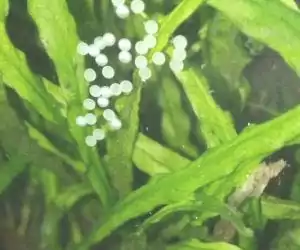
Tips for Distinguishing Viable Eggs from Non-viable Ones
- Color and Transparency: Viable Glofish eggs exhibit a consistent and clear appearance. Healthy eggs are often translucent with a discernible embryo inside. Avoid eggs that appear discolored, cloudy, or have irregularities in shape.
- Egg Firmness: Gently touch the eggs with a soft tool or your fingertip. Viable eggs should feel firm and have a slight resistance. If an egg feels mushy or collapses under gentle pressure, it may be non-viable and should be removed.
- Fertilization Signs: Look for signs of fertilization, such as the presence of tiny developing eyes or movement within the egg. Viable eggs will show these early signs of life, indicating a successful fertilization process.
- Uniformity in Clutch: A healthy clutch of Glofish eggs will exhibit uniform characteristics. Inconsistent sizes, shapes, or colors among the eggs may indicate potential issues, and careful inspection is recommended.
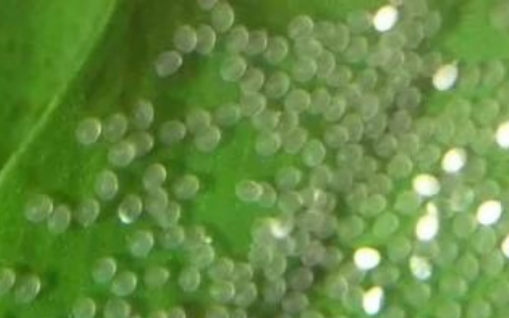
Understanding these visual cues is essential for both novice and experienced aquarists. Proper identification sets the foundation for effective egg care, ensuring the best chances for a successful hatching process. Stay tuned as we explore the critical steps in nurturing Glofish eggs and promoting the well-being of the developing fry.
Setting Up the Proper Environment
Importance of a Separate Breeding Tank for Glofish Eggs
- Minimizing Disturbances: Establishing a dedicated breeding tank is paramount to provide a controlled and undisturbed environment for Glofish eggs. This isolation minimizes disruptions from other tank inhabitants, ensuring the safety and optimal development of the eggs.
- Enhancing Survival Rates: A separate tank offers protection against potential threats, such as adult Glofish accidentally consuming their own eggs or other tank mates showing interest in the clutch. This segregation significantly increases the chances of successful hatching and fry survival.
Ideal Conditions for Egg Incubation
- Water Quality: Maintain pristine water conditions by regularly monitoring parameters such as ammonia, nitrites, and nitrates. A clean and well-filtered environment promotes overall health and development of Glofish eggs.
- Temperature: Keep the water temperature within the range of 78-80 degrees Fahrenheit (25-27 degrees Celsius). Consistent warmth encourages the metabolic processes crucial for the incubation and hatching of Glofish eggs.
- pH Levels: Aim for a slightly acidic to neutral pH range of 6.8-7.0. This range mimics the natural conditions that Glofish prefer, fostering a suitable environment for the development of healthy embryos.
- Soft Water Preference: Glofish generally thrive in softer water conditions. Consider using a water conditioner to achieve the appropriate hardness, providing an environment conducive to successful egg incubation.
Understanding and maintaining these environmental factors are pivotal in ensuring the well-being of Glofish eggs. By creating an isolated and carefully regulated space, aquarists can actively contribute to the success of the breeding process. Stay tuned as we delve deeper into the intricacies of Glofish egg care, exploring the critical components that contribute to a thriving aquatic nursery.
Protecting Glofish Eggs
Discussion on Potential Threats to Glofish Eggs
- Intra-species Threats: Adult Glofish may unintentionally pose a threat to their own eggs. While the intention is never malicious, curiosity or accidental consumption can occur, emphasizing the need for careful monitoring and protection.
- Inter-species Threats: Other tank inhabitants, especially if they are opportunistic or aggressive, might view Glofish eggs as a potential food source. This includes both fish and invertebrates that may show interest in the clutch.
- Environmental Factors: Unfavorable water conditions, fluctuations in temperature, and poor water quality can compromise the viability of Glofish eggs. Addressing these factors is crucial for the overall success of the incubation process.
Strategies to Safeguard Eggs
- Isolation in a Breeding Tank: Reiterating the importance of a separate breeding tank, this strategy minimizes the risk of intra-species threats and protects the eggs from potential harm caused by other tank inhabitants.
- Tank Dividers: If a separate breeding tank isn’t feasible, consider using tank dividers to create a designated space within the main aquarium. This physical barrier helps prevent accidental contact with adult Glofish and other potential predators.
- Providing Hiding Places: Introduce aquarium decorations, plants, or breeding cones to create hiding spots for Glofish eggs. These structures offer protection, reducing the likelihood of predation and providing a conducive environment for successful incubation.
- Regular Monitoring: Consistent observation of both the breeding pair and the eggs is essential. Detecting any signs of stress or predation early on allows for prompt intervention and adjustment of environmental conditions.
By understanding and proactively addressing potential threats, aquarists can significantly increase the chances of a successful Glofish egg incubation. Stay tuned as we explore further strategies and best practices for ensuring the well-being of Glofish fry during this critical stage of their life cycle.
Monitoring and Maintenance
Regular Checks on Water Quality
- Importance of Water Parameters: Consistent and meticulous monitoring of water quality parameters, including ammonia, nitrites, nitrates, and pH, is fundamental to the health of Glofish eggs. Any fluctuations can have a direct impact on the success of the incubation process.
- Testing Routine: Establish a routine for water testing, conducting regular assessments to ensure that the conditions remain within the optimal range. Testing kits specific to freshwater aquariums can provide accurate readings for key parameters.
Adjustments to Maintain Optimal Conditions for Hatching
- Temperature Stability: Maintain a stable and consistent water temperature within the recommended range for Glofish egg incubation. Sudden fluctuations can stress the developing embryos and hinder the hatching process.
- pH Control: Keep the pH levels steady within the preferred range. If necessary, make gradual adjustments using pH buffers to prevent sudden shifts that could impact the delicate balance required for successful hatching.
- Water Changes: Regular partial water changes, performed with care to avoid disturbing the eggs, help maintain overall water quality. This practice removes accumulated waste and replenishes essential minerals, contributing to a healthy environment.
- Oxygenation: Ensure proper oxygenation within the tank by using an aquarium air pump or adjusting water flow. Adequate oxygen levels are crucial for the well-being of both Glofish eggs and developing fry.
Maintaining optimal conditions through consistent monitoring and strategic adjustments is key to supporting the successful hatching of Glofish eggs. By incorporating these practices into your routine, you contribute to the overall health and vitality of the aquatic environment, setting the stage for the emergence of vibrant and healthy Glofish fry. Stay tuned as we delve further into the intricacies of caring for these enchanting underwater companions during their early stages of life.
Hatching Process
Signs of Imminent Hatching
- Egg Transparency: As the hatching process approaches, you may notice an increase in transparency of Glofish eggs. This change allows for a clearer view of the developing embryos inside, providing an exciting glimpse into the impending emergence of fry.
- Movement Within the Egg: Vigilant observation may reveal subtle movements within the eggs. These signs of life indicate that the embryos are nearing the point of hatching, and the fry will soon make their entry into the aquatic world.
What to Expect During the Hatching Process
- Egg Pipping: The hatching process, also known as pipping, involves the fry breaking through the eggshell. This may be a gradual or sudden event, depending on individual variations. Witnessing this breakthrough is a thrilling moment for aquarium enthusiasts.
- Fry Behavior: Newly hatched Glofish fry often exhibit a cautious exploration of their surroundings. They may stay close to the hatching site initially, gradually venturing out as they gain confidence. This exploratory behavior is a positive indicator of their health and readiness for independent swimming.
- Feeding Transition: As the fry begin to explore their environment, it’s essential to provide suitable micro-sized food. Infusoria, microorganisms, or specialized fry food help meet their nutritional needs during this early stage of development.
- Parental Involvement: Depending on the Glofish species, parents may show varying levels of interest in the fry. Some may actively protect and care for the offspring, while others may require separation to prevent unintentional harm.
Understanding the signs and behaviors associated with the hatching process allows aquarists to appreciate this crucial stage in the life cycle of Glofish. Stay tuned as we explore the post-hatching care, offering insights into providing optimal conditions for the fry’s growth and well-being. Witness the marvel of life unfolding within your aquarium as you embark on this enchanting journey of Glofish breeding.
Post-Hatching Care
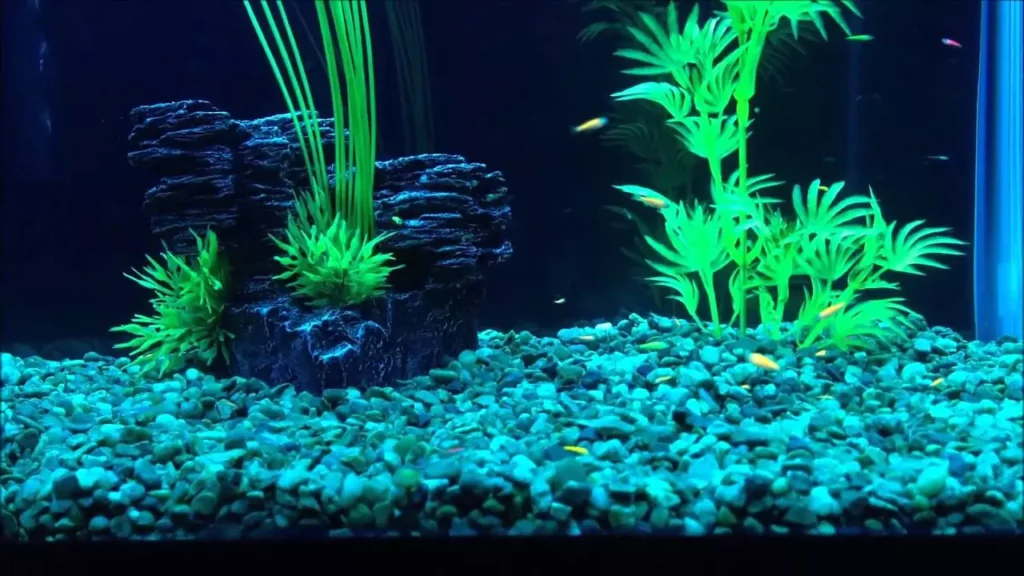
Ensuring a Safe Environment for the Fry
- Separation from Adults: Once hatched, promptly transfer the Glofish fry to a separate nursery tank to protect them from potential predation by adult fish. This provides a controlled environment, reducing stress and increasing the chances of fry survival.
- Optimal Water Conditions: Maintain pristine water quality in the nursery tank by conducting regular water changes and monitoring key parameters. Clean water is crucial for the health and development of Glofish fry, supporting their delicate immune systems.
- Providing Hiding Places: Introduce gentle water flow and aquatic plants to create hiding spots for the fry. This mimics their natural habitat, offering security and shelter as they navigate their newfound world.
Proper Feeding and Nutrition for Glofish Fry
- Micro-Sized Food: Start with appropriately sized micro-food or infusoria to meet the nutritional needs of the tiny fry. Gradually introduce specialized fry food as they grow, ensuring a balanced diet that supports healthy development.
- Frequent Feedings: Glofish fry have small stomachs and high metabolisms, requiring frequent feeding throughout the day. Dividing their daily food intake into several small meals helps prevent overfeeding and maintains water quality.
- Observation and Adjustments: Monitor the fry’s behavior and growth closely. Adjust feeding amounts based on their appetite and growth rate. Over time, you can introduce finely crushed flakes or baby brine shrimp to diversify their diet.
- Gradual Transition to Adult Food: As the Glofish fry grow, gradually transition them to age-appropriate adult food. This ensures they receive the necessary nutrients for optimal health and vibrant coloration.
Providing meticulous care during the post-hatching phase is crucial for the well-being of Glofish fry. By creating a nurturing environment and offering a balanced diet, aquarists can witness the transformation of these tiny creatures into vibrant and flourishing members of the aquatic community. Stay tuned for more insights into the ongoing care and development of Glofish as we guide you through the various stages of their captivating journey.
Troubleshooting Common Issues
Addressing Common Problems During Incubation and Hatching
- Fungal Infections: Fungal growth on Glofish eggs can be a common concern. To address this, gently remove any visibly infected eggs with a soft tool. Consider using a fungicide specifically designed for aquarium use, following dosage instructions carefully to prevent the spread of the infection.
- Inconsistent Water Conditions: Fluctuations in temperature, pH, or water quality can impact egg viability and hatching rates. Regularly monitor and maintain stable water parameters to create an environment conducive to successful incubation.
- Poor Hatching Rates: If hatching rates are lower than expected, evaluate factors such as water quality, temperature, and potential stressors. Adjustments to these conditions, along with a careful review of the breeding setup, can contribute to improved hatching success.
Tips for Resolving Issues
- Quarantine Infected Eggs: Isolate eggs showing signs of fungal infection in a separate container. This prevents the spread of the infection to healthy eggs and allows for targeted treatment without compromising the overall incubation process.
- Water Parameter Adjustments: Regularly test and adjust water conditions to meet the specific needs of Glofish eggs. Maintain a stable environment with optimal temperature and pH, minimizing stress on the developing embryos and supporting a higher hatching success rate.
- Enhance Environmental Enrichment: Introduce natural elements such as live plants or gentle water flow to enhance the aquarium environment. A well-structured and enriched tank provides a sense of security for breeding pairs, reducing stress and promoting successful reproduction.
- Consult with Experienced Breeders: Seek advice from experienced Glofish breeders or aquarium forums to gain insights into common issues and troubleshooting techniques. Learning from the experiences of others can provide valuable tips for overcoming challenges in the breeding process.
By proactively addressing and troubleshooting common issues during the egg incubation and hatching stages, aquarists can optimize conditions for the successful development of Glofish fry. Stay informed and attentive to the needs of your aquatic community as you navigate the intricacies of breeding these captivating underwater companions.
Conclusion
As we conclude this exploration into the captivating world of Glofish egg care, it’s essential to recap the key points that contribute to a successful breeding experience.
- Understanding the Reproductive Journey: Appreciate the intricacies of Glofish reproduction, from courtship rituals to the careful placement of eggs, laying the foundation for a thriving aquatic community.
- Identifying and Safeguarding Eggs: Recognize the distinctive appearance of Glofish eggs and implement strategies to protect them from potential threats, fostering a secure environment for incubation.
- Setting Up the Proper Environment: Establish a separate breeding tank with optimal water conditions, temperature, and pH levels, providing an ideal incubation space for the eggs.
- Monitoring and Maintenance: Regularly check water quality parameters and make necessary adjustments to ensure a stable and nurturing environment, vital for the successful development of Glofish eggs.
- Navigating the Hatching Process: Recognize signs of imminent hatching, witness the breakthrough moments, and understand the behaviors associated with the emergence of vibrant Glofish fry.
- Post-Hatching Care: Transfer fry to a safe environment, maintaining optimal conditions and providing appropriate nutrition to support their growth and well-being.
- Troubleshooting Common Issues: Address challenges like fungal infections and poor hatching rates with proactive measures, including quarantine, water parameter adjustments, and seeking advice from experienced breeders.
As you embark on your journey into the realm of Glofish breeding, we encourage enthusiasts to share their experiences and tips. Your insights contribute to a collaborative community of aquarium enthusiasts, fostering knowledge exchange and enhancing the overall well-being of Glofish in captivity.
Remember, the magic of Glofish egg care lies not only in the vibrant colors that grace your aquarium but in the delicate balance of science and artistry that transforms a breeding project into a rewarding and fulfilling aquatic endeavor. May your aquarium be a haven of aquatic marvels, and may your Glofish thrive in the care and dedication you provide. Happy breeding!
Additional Resources
Relevant Forums
Dive deeper into the world of Glofish care by engaging with fellow enthusiasts on reputable online forums. Share experiences, seek advice, and stay updated on the latest developments in Glofish breeding. Explore these valuable communities.
Reputable Books for Further Reading
Expand your knowledge with comprehensive guides and insightful books authored by experts in the field. These resources provide in-depth information on Glofish care, breeding, and the intricacies of maintaining a thriving aquarium.
- Glofish for Beginners by Lizzy Donald
- Aquarium Care of Goldfish by David E. Boruchowitz
- The Simple Guide to Freshwater Aquariums by David E. Boruchowitz
Accessing these additional resources will empower you with a wealth of knowledge and connect you with a community of passionate aquarists. Stay informed, share your experiences, and continue to enrich your Glofish breeding journey. Happy exploring!
Frequently Asked Questions (FAQs)
1. What is the optimal temperature for Glofish egg incubation?
The optimal temperature for Glofish egg incubation is in the range of 78-80 degrees Fahrenheit (25-27 degrees Celsius). Maintaining a stable and warm environment is crucial for the successful development of Glofish eggs.
2. How do I identify viable Glofish eggs from non-viable ones?
Viable Glofish eggs are typically translucent with a clear appearance, showcasing a discernible embryo. Non-viable eggs may appear discolored, cloudy, or have irregular shapes. Gently touching the eggs can also help distinguish firm, healthy eggs from mushy, non-viable ones.
3. Should I separate Glofish eggs from the main tank for incubation?
Yes, it’s recommended to separate Glofish eggs from the main tank for incubation. Using a dedicated breeding tank or tank dividers helps create a controlled environment, minimizing disturbances and increasing the chances of successful hatching.
4. What are common signs that Glofish eggs are about to hatch?
Signs of imminent hatching include increased transparency of the eggs, indicating the embryos are ready to emerge. Additionally, subtle movements within the eggs may be observed as the fry prepare for the hatching process.
5. How often should I feed Glofish fry after hatching?
Glofish fry have small stomachs and high metabolisms, requiring frequent feedings throughout the day. Dividing their daily food intake into several small meals helps prevent overfeeding and supports their nutritional needs during the early stages of development.

